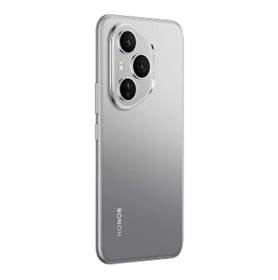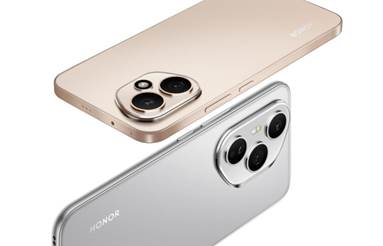Smartphone design has evolved
significantly, moving from bulky phones to sleek, functional devices.
Innovations in technology, materials, and user preferences have driven this
progress, offering better aesthetics, enhanced usability, and improved comfort.
As we look ahead, new trends such as AI, foldable displays, and eco-friendly
materials are emerging, shaping the future of mobile design. The journey is far
from over, and the next phase promises even more exciting developments.

The Key Phases
of Smartphone Design Evolution
The
Shift to All-Screen Smartphones
The shift to all-screen smartphones
marked a major design transformation. Devices transitioned from small screens
with large bezels to immersive edge-to-edge displays. This innovation allowed
for larger screens while maintaining compactness. New technologies like Face ID
and in-display fingerprint sensors emerged to complement this design. These
advancements not only improved aesthetics but also user interaction, making
smartphones more immersive and functional.
Innovation in
Materials and Build Quality
The evolution in materials has
moved from plastic to premium materials like aluminum, stainless steel, and
glass. These advancements provide both durability and elegance. Companies like HONOR have incorporated materials like ceramic and sapphire
glass for luxurious finishes. Additionally, features like water resistance and
greater durability have become standard, meeting consumer demands for
reliability, style, and long-lasting devices.
The
Integration of Foldable Screens
Foldable screens represent a major
leap in smartphone design, offering users larger screens without sacrificing
portability. Brands have pioneered this technology, creating devices with
flexible displays that fold into compact forms. These innovations open new
possibilities for multitasking and immersive experiences. As foldable display
technology improves, the cost of these devices is expected to decrease, making
them more accessible.
The Influence
of Display Technology on Design
OLED and
AMOLED Screens: Changing the Game
OLED and AMOLED screens have
revolutionized smartphone displays, offering vibrant colors and deeper blacks
while conserving battery life. These technologies have allowed manufacturers to
prioritize display quality, leading to thinner phones without compromising on
visuals. Devices like the HONOR series showcase the
advantages of OLED displays, which are now a standard feature in high-end
smartphones.

The Impact of
Refresh Rates on User Experience
High refresh rates enhance the user
experience by providing smoother, more responsive interactions. Smartphones
with refresh rates of 120Hz or higher deliver fluid visuals, especially
beneficial for gaming and media consumption. Beyond aesthetics, higher refresh
rates also improve touch sensitivity, offering a more intuitive and satisfying
user experience. As demand for smoother visuals grows, this feature continues
to influence smartphone design.
How Display
Innovation Drives Design Trends
Display innovations influence
smartphone design by enabling all-screen formats, foldable designs, and
minimalistic aesthetics. High refresh rates and OLED screens give manufacturers
greater flexibility to experiment with device form factors. This trend has
pushed brands to prioritize screen size and clarity, resulting in sleeker, more
visually immersive smartphones, for example the HONOR 400 pro. Display technology
continues to shape the identity and capabilities of modern smartphones.
The Impact of
Design on Consumer Choices
How Aesthetics
Influence Buying Decisions
Aesthetics play a critical role in
consumer decisions, with design elements such as colors, materials, and shapes
influencing purchasing choices. Brands like HONOR set trends with minimalist, elegant designs and offer bold, dynamic styles. The look and feel of a
smartphone can reflect a consumer’s personality, making it a significant factor
in brand loyalty and overall satisfaction.
The Growing
Importance of Ergonomics
Ergonomics has become increasingly
important as smartphones are used for extended periods daily. Manufacturers
like HONOR design phones that fit
comfortably in the hand, enhancing user interaction. Optimizing weight, button
placement, and dimensions reduces fatigue and improves usability. As
smartphones become more integral to everyday life, ergonomic design will
continue to shape how devices are used and perceived.
The Role of
Brand Identity in Design Preferences
Brand identity is a key factor in
shaping smartphone design preferences. HONOR’s focus on sleek minimalism aligns
with its premium image and offers more versatile designs. These design philosophies resonate with different
audiences, influencing perceptions of quality and trust. A strong, consistent
design identity helps brands differentiate themselves and build consumer
loyalty in a competitive market.
What’s Next?
Emerging Trends in Smartphone Design
The Role of AI
in Smartphone Design
AI is becoming central to
smartphone design, enabling more personalized user experiences. AI can adapt
interfaces and features based on user behavior, making devices smarter and more
intuitive. This technology is also optimizing design elements like ergonomics
and functionality, providing features such as voice assistants and improved
photography. As AI continues to evolve, it will shape future smartphone designs
and interactions.
Sustainability
and Eco-Friendly Materials
Sustainability is increasingly
influencing smartphone design. Brands are turning to eco-friendly materials
such as recycled metals and bioplastics to reduce environmental impact. HONOR’s commitment to carbon neutrality is a prime example
of this shift, setting a standard for eco-conscious design. As consumers become
more environmentally aware, brands will continue to prioritize sustainable
practices in design, enhancing product longevity and reducing waste.
The Potential
of Augmented Reality in Smartphone Design
Augmented Reality (AR) is reshaping
smartphone design by enabling interactive experiences that blend digital and
physical environments. AR applications require design adjustments to
accommodate new interfaces and functionalities. Companies like HONOR are integrating AR capabilities to enhance
navigation, gaming, and other interactive features. As AR technology matures,
it will push smartphone design toward more immersive and dynamic user
experiences.
The Future of
Smartphone Design: Predictions
Flexible and
Modular Designs
The future of smartphone design may
embrace flexible and modular components, allowing for personalization and
upgrades. Flexible screens and modular designs could enable users to change or
upgrade parts like cameras and batteries. As manufacturers explore these
concepts, smartphones will become more adaptable to individual needs, offering
users greater flexibility in their devices.
Ultra-Thin and
Lightweight Materials
Future smartphones will likely
focus on ultra-thin, lightweight materials to offer portability without
sacrificing strength. Advances in materials technology will enable
manufacturers to create durable, slim devices that meet the demand for sleek
aesthetics. Companies like HONOR are already
experimenting with these innovations, paving the way for even thinner, more
elegant smartphones in the coming years.
The Role of
Biometric and Gesture Controls
Biometric and gesture controls will
play a pivotal role in the future of smartphone interaction. Features like
facial recognition and fingerprint scanning will continue to improve security,
while gesture controls will offer more intuitive ways to navigate devices. As
these technologies evolve, smartphones will become more responsive, offering
users enhanced security and streamlined functionality.
Conclusion
Smartphone design has undergone
remarkable evolution, driven by technology, materials, and consumer demand.
From all-screen displays to foldable innovations, design continues to push
boundaries. As emerging trends like AI, sustainability, and AR take hold, the
next generation of smartphones will offer even more functionality and style.
With ongoing advancements, the future of smartphone design promises an exciting
journey of innovation, meeting the needs of an ever-changing tech-savvy
audience.
